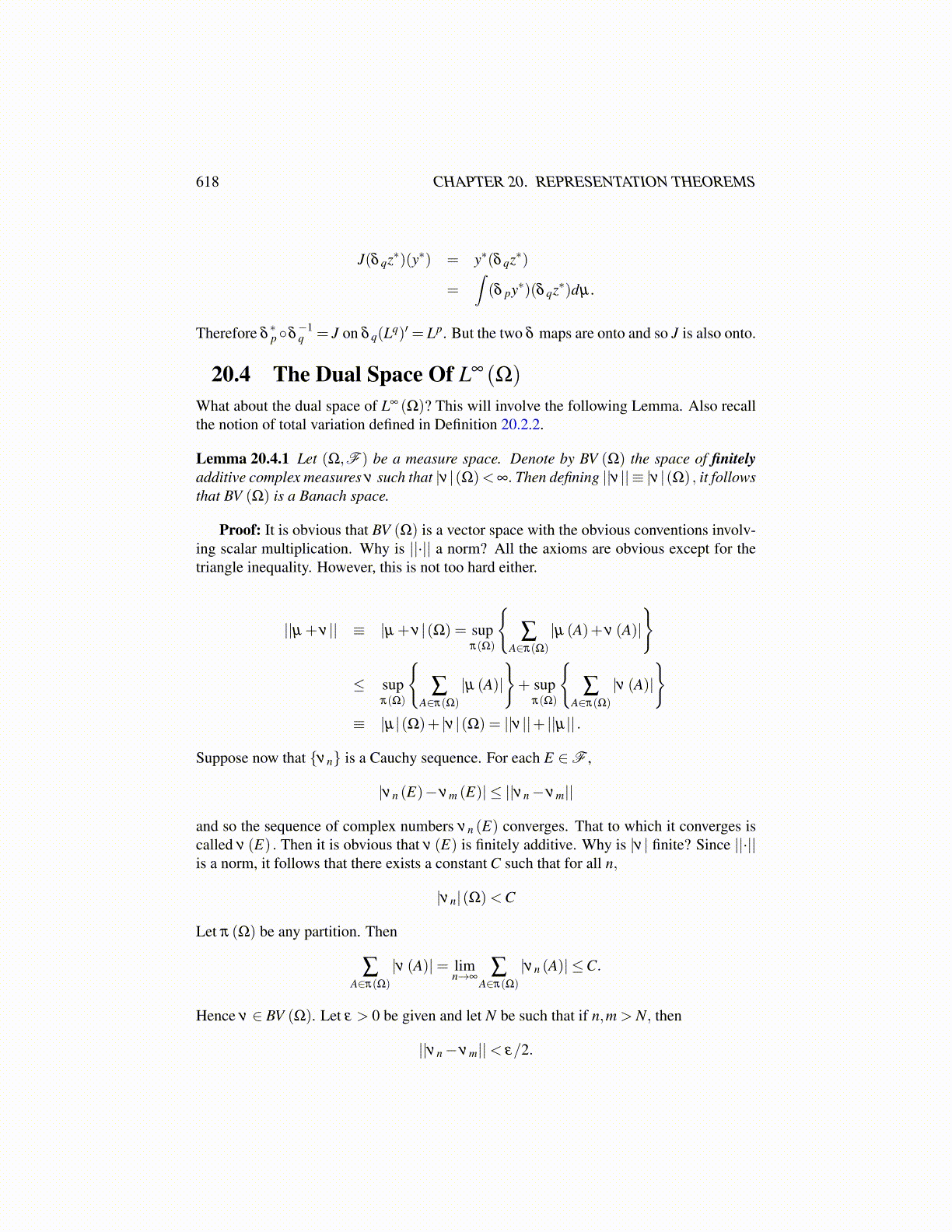
618 CHAPTER 20. REPRESENTATION THEOREMS
J(δ qz∗)(y∗) = y∗(δ qz∗)
=∫(δ py∗)(δ qz∗)dµ .
Therefore δ∗p ◦δ
−1q = J on δ q(Lq)′ = Lp. But the two δ maps are onto and so J is also onto.
20.4 The Dual Space Of L∞ (Ω)
What about the dual space of L∞ (Ω)? This will involve the following Lemma. Also recallthe notion of total variation defined in Definition 20.2.2.
Lemma 20.4.1 Let (Ω,F ) be a measure space. Denote by BV (Ω) the space of finitelyadditive complex measures ν such that |ν |(Ω)<∞. Then defining ||ν || ≡ |ν |(Ω) , it followsthat BV (Ω) is a Banach space.
Proof: It is obvious that BV (Ω) is a vector space with the obvious conventions involv-ing scalar multiplication. Why is ||·|| a norm? All the axioms are obvious except for thetriangle inequality. However, this is not too hard either.
||µ +ν || ≡ |µ +ν |(Ω) = supπ(Ω)
{∑
A∈π(Ω)
|µ (A)+ν (A)|}
≤ supπ(Ω)
{∑
A∈π(Ω)
|µ (A)|}+ sup
π(Ω)
{∑
A∈π(Ω)
|ν (A)|}
≡ |µ|(Ω)+ |ν |(Ω) = ||ν ||+ ||µ|| .
Suppose now that {νn} is a Cauchy sequence. For each E ∈F ,
|νn (E)−νm (E)| ≤ ||νn−νm||
and so the sequence of complex numbers νn (E) converges. That to which it converges iscalled ν (E) . Then it is obvious that ν (E) is finitely additive. Why is |ν | finite? Since ||·||is a norm, it follows that there exists a constant C such that for all n,
|νn|(Ω)<C
Let π (Ω) be any partition. Then
∑A∈π(Ω)
|ν (A)|= limn→∞
∑A∈π(Ω)
|νn (A)| ≤C.
Hence ν ∈ BV (Ω). Let ε > 0 be given and let N be such that if n,m > N, then
||νn−νm||< ε/2.